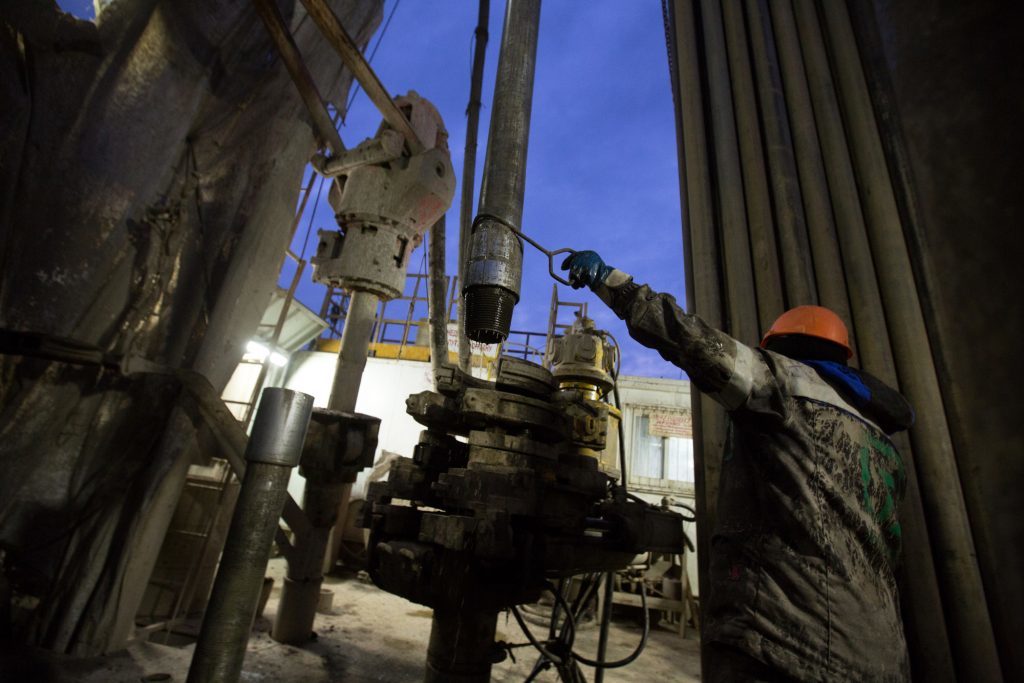
OPEC ministers head to Vienna, Austria, this week for the 173rd meeting of the Organization of Petroleum Exporting Countries. Brent crude prices are up almost 20 percent since the last meeting on May 25, 2017, while those for West Texas Intermediate are up around 10 percent. The Nov. 30 gathering is likely to have a different tone than the last two OPEC meetings because global oil demand has strengthened, inventories have tightened, prices are on the rise and trading technicals appear bullish.
Bullish oil price dynamics should please OPEC members, but like all large gatherings of colleagues at this time of year, some inter-office drama could spoil the party. Geopolitical tensions between Iran and Saudi Arabia are the highest in more than a year. This could spill over into the negotiating room, and dash traders’ hopes of additional OPEC and non-OPEC agreements to extend oil production cuts. Without additional an extension of oil production cuts — or at least without a significant extension — oil prices could come under some short-term pressure.
Global oil demand is a critical factor that will be top of mind when OPEC and non-OPEC members discuss their next policy moves. The main driver of oil prices in recent months has been the strong and improving outlook for global growth. The International Monetary Fund has revised up its global growth outlook, and euro zone and U.S. manufacturing PMIs have been on a tear. There have also been important improvements in China, where the Caixin manufacturing PMI has shown an impressive rebound from a manufacturing recession between December 2014 and June 2016.
That recession in China, which is the biggest net importer of crude in the world, weighed on oil demand and prices. It was also a contributing factor to rising global oil inventories in 2015 and 2016. But since then, improved Chinese growth and manufacturing have contributed to increased oil demand and higher oil prices. In the November 2017 OPEC monthly report, oil demand for the first three quarters of 2017 was shown to be 1.6 million barrels per day higher than in 2016. This has supported prices, and should make OPEC and non-OPEC members feel optimistic about global demand and oil prices in the year ahead.
OPEC will also be looking at the efficacy of its policy of curtailed oil output. And they are likely to be pleased. The stronger outlook for global demand has been accompanied by a drop in Organization for Economic Co-operation and Development (OECD) inventories, which are now closer to the five-year average. This return to average levels has been what OPEC and non-OPEC members have euphemistically referred to as the “rebalancing” of global inventories. And it means that the levels of reduced oil production have been effective.
While OPEC and non-OPEC members are unlikely to direct policy toward any explicit price targets this week in Vienna, it is clear that they have been targeting — and will continue to target — petroleum inventories. And the target for OECD commercial oil inventories is the five-year average. Inventories have been falling toward these levels, and the policy decision this week is likely to support a further drop in inventories.
All 36 analysts and traders surveyed by Bloomberg News last week expected an extension of oil production cuts, with a plurality expecting a nine-month extension. But there could be a fly in the ointment that prevents this extension from being a fait accompli.Extending the OPEC and non-OPEC production agreement — and the requisite coordination between countries — could be threatened by elevated geopolitical tensions between Iran and Saudi Arabia. Just last week, the Crown Prince of Saudi Arabia called the Supreme Leader of Iran “the new Hitler of the Middle East.” The choice of comparison just days before heading to Austria — the country where Adolf Hitler was born — may be a coincidence, but it is certainly a bad omen.
The prospects of extended oil production cuts are supportive of oil prices, but no extension or only a short extension — of say three months — could prove bearish for oil prices in the immediate term. As traders position themselves ahead of the OPEC decision, two questions will dominate their positions this week.
The first is whether the tension between Saudi Arabia and Iran could spill over into the negotiating room. I believe it absolutely could. It’s happened before, so it would not be a surprise to see some tense or terse interactions between ministerial groups. The second question is whether this tension could affect OPEC’s potential plans to adhere to its production cuts through April, 1 2018, or prevent an extension of production cuts. Since Iran has so far been exempted from the oil production cuts, this could become an issue as a potential longer-duration extension of OPEC oil production cuts is evaluated this week.
Outcomes where OPEC production cuts are discarded or not extended seem less likely, but only because the effectiveness of the production cuts of the past year have proven fruitful at supporting oil prices. But with geopolitical pressures high, OPEC may need to opt for a shorter extension, and revisit the issue after tensions have cooled by the time of its next meeting, which is likely to be in June 2018.
While dynamics have been bullish for crude oil in recent months, if rising tensions and expectations of extended oil production cuts lead to disappointment, then oil prices could come under some short- term pressure.
Recommended for you
